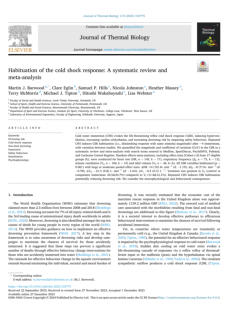Scientific papers 2023 - Part C










Authors: Hisnindarsyah, Ahyar Wahyudi
This article aims to explore the potential of hyperbaric
oxygen therapy in enhancing fertility. Hyperbaric Oxygen
Therapy (HBOT) is a medical procedure that involves
inhaling pure oxygen (100%) within a chamber or room
under pressure higher than normal atmospheric pressure,
specifically over 1 absolute atmosphere (ATA), to
accelerate and enhance the body's healing and recovery
abilities. Under elevated atmospheric pressure, gaseous
oxygen can dissolve more readily into the blood plasma.
Research results suggest that HBOT holds potential in
improving fertility due to endometrial receptivity issues
and may also boost male fertility.
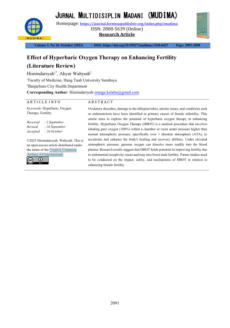

Authors:
Diana Paskaleva, Vasilka Gyurova-Kancheva, Slavka
Kacarova, Bozhidar Pilichev, Okean Kostov, Maria
Bozhkova, Dimitar Penkov
A 61-year-old man with severe pneumonia resulting from
COVID-19 experienced persistent hypoxemia and
dyspnea after the acute phase.
Prescribed continuous oxygenation at home due to
deteriorating general condition and quality of life.
Undertook additional hyperbaric oxygen therapy,
resulting in significant improvement after the 20th session.


Authors: Anders Lund Selli, Mohammadreza Ghasemi,
Taylor Watters, Francis Burton, Godfrey Smith,
and Erik Sveberg Dietrichs
Accidental hypothermia, recognized by a core
temperature below 35 °C, is a lethal condition with a
mortality rate of up to 25%. Recent in vivo and in vitro
studies have suggested levosimendan, milrinone, and
isoprenaline as inotropic treatment strategies in this
patient group. However, these drugs may pose an
increased risk of ventricular arrhythmias during
hypothermia.
The authors’ aim was, to describe the effects of
levosimendan, milrinone, and isoprenaline on the action
potential in human cardiomyocytes during hypothermia.
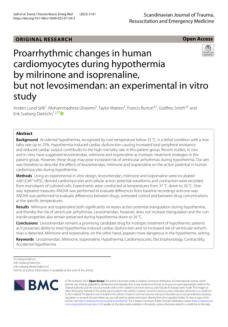

Authors:
Simone Schiavo, Connor T. A. Brenna, Lisa Albertini,
George Djaiani, Anton Marinov, Rita Katznelson
Hyperbaric oxygen therapy (HBOT) has several
hemodynamic effects, including an increase in afterload
(due to vasoconstriction) and a decrease in cardiac
output. This, along with rare reports of pulmonary edema
during emergency treatment, has led providers to
consider HBOT relatively contraindicated in patients with a
reduced left ventricular ejection fraction (LVEF).
This study retrospectively reviews patients with pre-existing
diagnoses of heart faiure who underwent elective HBOT
to analyze HBOT-related acute heart faiure complications.


Authors: Desmond M. Connolly, leigh a. Madden, Victoria
C. Edwards, timothy J. D’Oyly, stephen D. R.
Harridge, thomas G. smith; Vivienne M. Lee
Recent laboratory investigations of decompression sickness
risk at 25,000 ft (7620 m) have enabled the evaluation of
early pathophysiological responses to exertional
decompression stress.
In this study, 15 healthy men aged 20–50 years undertook
two consecutive (same-day) ascents to 25,000 feet for 60
and 90 minutes, breathing 100% oxygen, each following
1 h of prior denitrogenation. Venous blood was sampled
immediately after the second ascent, and the next
morning.
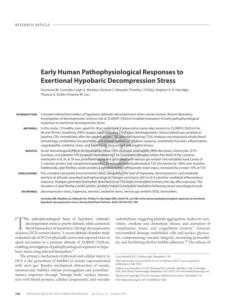

Authors: Tolga AKIs, Nese ALKAN
This study examined the predictors of the dynamic apnea
performance of elite free diving athletes based on their
actual championship performances as well as their speed
in qualifications and finals. Athletes’ static apnea, dynamic
apnea qualifications, and dynamic apnea finals
performances in the 6th and 8th World, and the 3rd and
4th European Apnea Championships were examined
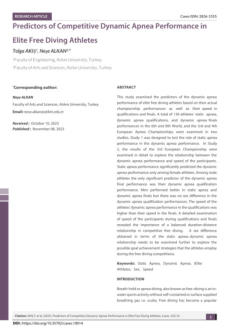

Authors:
Feiko JM de Jong, Paul Brinkman, Thijs T Wingelaar, Pieter-
Jan AM van Ooij, Robert A van Hulst
Pulmonary oxygen toxicity (POT), an adverse reaction to
an elevated partial pressure of oxygen in the lungs, can
develop as a result of prolonged hyperbaric hyperoxic
conditions. Previous studies have identified several volatile
organic compounds (VOCs) in exhaled breath indicative
of POT after various wet and dry hyperbaric hypoxic
conditions, primarily in laboratory settings.
This study examined VOCs after exposures to 81 metres of
seawater by three navy divers during operational heliox
diving.
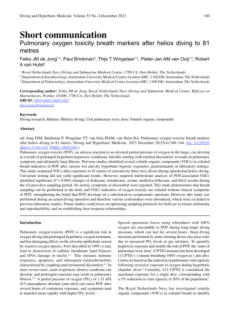

Authors:
Pauline Lallement, Alain Boussuges, Paul Habert, Julien
Bermudez, Martine Reynaud-Gaubert, Stéphane Delliaux,
Fabienne Bregeon, Benjamin Coiffard
Computed tomography (CT) is routinely performed to
assess dyspnea, but few data are evaluating
diaphragmatic muscle using CT. This study aims to assess
CT in the diagnosis of diaphragmatic dysfunction.
The authors retrospectively collected diaphragmatic
ultrasounds performed between 2018 and 2021 at their
centre (Marseille, France). 65 patients were included, 24
with diaphragmatic paralysis, 13 with diaphragmatic
weakness, and 28 control subjects.
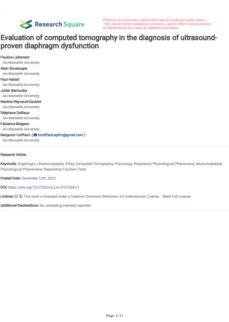

Click on the octopus
to return to the top
of the page

Publisher:
U.S. Department of Health and Human Services
This brief document explains the use of Dopplers in
medical applications.
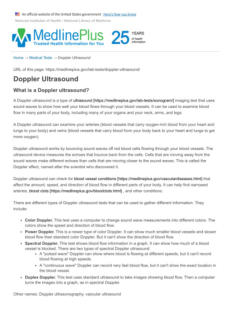

Authors: bigail G. Harrell, Stephen R. Thom, and C.Wyatt
Shields
Decompression sickness (DCS) is believed to be caused by
nitrogen bubbles in the blood and tissues. However, the
severity of DCS does not always correlate with the number
of bubbles. The authors propose that high gas pressures
could alter the behaviour of immune cells in the lung.
Using lung-on-a-chip technology with human cells,
researchers exposed the devices to various pressures and
types of air. They found that immune cells responded
within an hour, especially in normal air conditions,
suggesting that immune responses at high pressures play
a role in DCS.
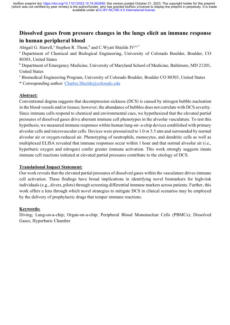

Authors:
Stephane Perrey, Valentina Quaresima, Marco Ferrari
A significant number of articles have been published on
the technical aspects of muscle near-infrared spectroscopy
(NIRS), including signal interpretation. They highlight the
advantages of using NIRS to measure the physiological
status and workload of working muscles.
The aim of this updated systematic review was to highlight
the applications of muscle oximetry in assessing skeletal
muscle oxidative performance during exercise and how
this technology has been applied to exercise and training.
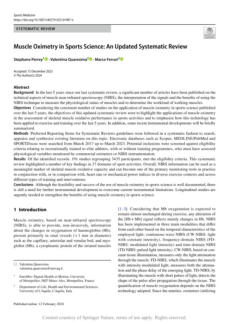

Authors:
Mohamed S. Imam, Ahmed Khalid Almutairi, Abdullah
Mutrik Alhajri, Mishary Mosleh Alharby, Mohammed H.
Alanazi, Ahmad G. Alotaibi, Mohamed E. A. Abdelrahim
This document presents a meta-analysis that evaluates the
effectiveness of hyperbaric oxygen treatment (HBOT) on
diabetic foot ulcers. The analysis compares HBOT to
standard treatment in terms of outcomes, including
healed ulcers, adverse events, mortality, ulcer area
reduction, amputation rates, and healing time. The text
aims to convey that HBOT shows significant benefits in
some areas (healed ulcers, adverse events, mortality, and
ulcer area reduction) but not in others (amputation rates
and healing time).
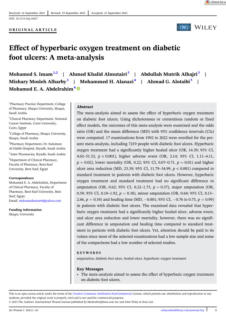

Authors: Maria Pia Francescato, Valentina Cettolo
This document is a comparative analysis of two algorithms
used to estimate the kinetic parameters of oxygen uptake
during moderate-intensity exercise to determine how the
'Independent-breath' (IND) algorithm, which accounts for
changes in lung gas stores, compares to the classical
'Expiration-only' (EXP) algorithm in terms of the time
constant and mean response time of oxygen uptake. The
results indicate that the IND algorithm yields faster mean
response times and different time-constant behaviors
compared to the EXP algorithm, suggesting that each
algorithm provides a distinct perspective on the
physiological processes occurring at the onset of exercise.
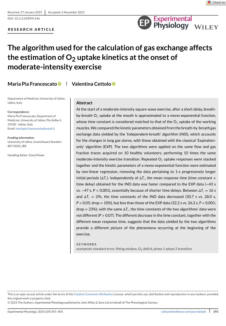

Authors: Hai-Rong Chen, Shi-Juan Lu, Qi Wang, Ming-Lan
Li, Xun-Chun Chen, Bi-Yun Pan
This document evaluates the clinical efficacy of Hyperbaric
Oxygen Therapy (HBOT) in treating diabetic foot ulcers
(DFU). It determines whether HBOT improves healing
rates and reduces amputation rates in DFU patients while
also assessing the incidence of adverse events and
mortality associated with the therapy.


Authors: Harry B. Rossiter & David C. Poole
This study explains the significance of pulmonary oxygen
uptake (VO2) kinetics in understanding muscle energetics,
mitochondrial function, and exercise tolerance. It
references the work of Brian J. Whipp and reviews by
Poole & Jones (2012) and Rossiter (2011) to support the
idea that the VO2 response, particularly during phase II,
provides valuable insights into these physiological
processes.


Authors:
Chang Tang, Lanting Wang, Zihua Chen, Jin Yang,
Haiqing Gao, Chenggong Guan, Qiaozhi Gu, Shan He,
Fanping Yang, Shengan Chen, Li Ma, Zhen Zhang, Ying
Zhao, Lin Tang, Yu Xu, Yue Hu, Xiaoqun Luo
This paper presents the findings of a clinical trial that
investigated the efficacy and safety of hydrogen therapy
compared to N-Acetylcysteine (NAC) therapy in patients
with early-stage interstitial lung diseases (ILD) to determine
whether hydrogen therapy is superior to NAC by
evaluating changes in high-resolution computed
tomography (HRCT) and composite physiologic index
(CPI) scores, as well as pulmonary function and adverse
events.
.
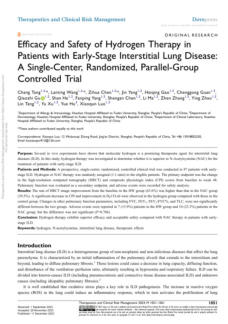


10 - E-Cigarettes and Associated Health Risks: An Update on
Cancer Potential.
- Published by Advances in respiratory medicine - MDPI

Authors: Rakesh Sahu, Kamal Shah, Rishabha Malviya,
Deepika Paliwal, Sakshi Sagar, Sudarshan Singh,
Bhupendra G. Prajapati, and Sankha
Bhattacharya
The purpose of this article is that E-cigarettes have
replaced natural tobacco with many people working on
diving and ROVs worksites due to many advantages such
as their portability and the fact that they do not emit
flammes, even though the fact they use batteries is to be
taken into account. However, their use poses similar
heath problems as natural tabacco.
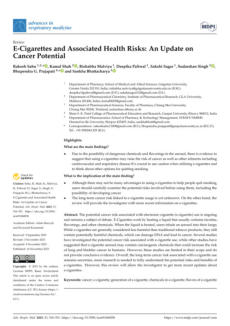


01 - Physical Properties of Helium and Application in Respiratory
Care
- Published by Encyclopedia - MDPI

Authors: Eric Chappel
Helium, a low-density, inert gas, is used in medical
applications, particularly in respiratory care, as an adjunct
therapy for severe upper airway obstruction and asthma.
Kinetic theory calculations and simplified lung airways
models support its benefits
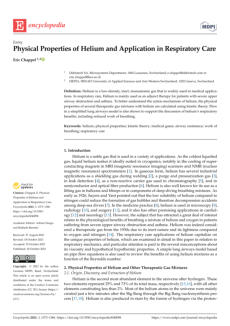



02 - The Principle of Human Electric Shock and Several Main Types
of Electric Shock
- Published by Highlights in Science, Engineering and Technology
Authors: Shixin Lin
This paper analyzes electric shock, its principles, types, and
potential harm to the human body. It uses Multisim
software to simulate lightning-induced electrocution,
obtaining the necessary external resistance for safety. The
study aims to increase public awareness of electric shock
hazards and provide information on preventive measures.
The simulation software improves accuracy and provides
methods for further research on electric shock.
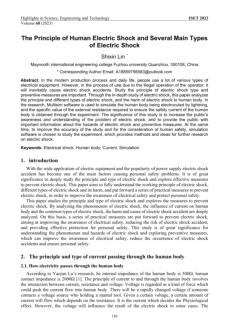


11 - Hydrogen Inhalation Reduces Lung Inflammation and Blood
Pressure in the Experimental Model of Pulmonary Hypertension
in Rats
- Published by Biomedicines - MDPI
Author:
Tatyana Kuropatkina, Dmitrii Atiakshin, Fedor Sychev,
Marina Artemieva, Tatyana Samoilenko, Olga Gerasimova,
Viktoriya Shishkina, Khaydar Gufranov, Natalia
Medvedeva, Tyler W. LeBaron, and Oleg Medvedev
Hydrogen has antioxidant properties and anti-
inflammatory effects. A monocrotaline-induced model of
pulmonary hypertension is suitable for studying
antioxidant activity. Male Wistar rats were injected with
monocrotaline or vehicle, and after 21 days, hydrogen
inhalation reduced systemic blood pressure, TGF-B
expression, and mast cell count. Hydrogen inhalation did
not affect main pulmonary hypertension markers.
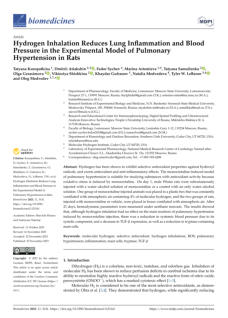



15 - Role of NMDA Receptor in High-Pressure Neurological
Syndrome and Hyperbaric Oxygen Toxicity
- Published by Biomolecules - MDPI
Author: Alice Bliznyuk, and Yoram Grossman
Professional divers and those using closed-circuit
breathing apparatus face high-pressure neurological
syndrome (HPNS) and hyperbaric oxygen toxicity
(HBOTx) due to reversible CNS hyperexcitability and
cognitive and motor deficits. The N-methyl-D-aspartate
receptor (NMDAR) plays a crucial role in provoking these
syndromes. Future research should focus on developing
neuroprotection against HPNS and HBOTx by removing
resting Zn2+ voltage-independent inhibition.
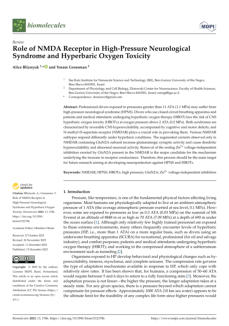



16 - Rapture of the deep: gas narcosis may impair decision-making
in scuba divers
- Published by Diving and Hyperbaric Medicine
Author: Pauliina A Ahti, Jan Wikgren
A study found that gas narcosis may affect decision-
making in scuba divers at 30 meters depth, despite its
presence at shallow depths. The study used underwater
tablets equipped with the Iowa Gambling Task to
evaluate impairment in decision-making. Divers at 30
meters scored lower in the task than those at 5 meters.
The findings suggest that gas narcosis may affect
decision-making in scuba divers at 30 meters depth,
supporting previous studies showing its presence at
shallow depths.
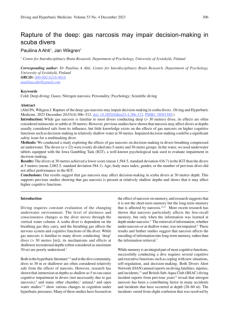

Authors: Piyush Garg, Ayushi Mendiratta, Akshat Banga,
Anna Bucharles, Maria Victoria Ferreira Piccoli,
Balakrishnan Kamaraj, Rakhtan K. Qasba, Vikas
Bansal, Jayaraman Thimmapuram, Robert
Pargament, Rahul Kashyap
This article presents a systematic review and meta-analysis
investigating the impact of breathing exercises on blood
pressure (BP) and heart rate (HR). A total of 15
randomized clinical trials (RCTs) were analyzed, revealing
that breathing exercises lead to a modest yet significant
reduction in both systolic and diastolic blood pressure, as
well as a decrease in heart rate. These findings indicate a
beneficial effect of breathing techniques on cardiovascular
health, although the studies reviewed contained some
biases
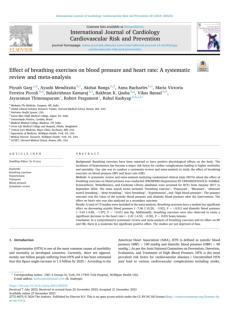

Authors: Martin J. Barwood, Clare Eglin, Samuel P. Hills,
Nicola Johnston, Heather Massey, Terry
McMorris, Michael J. Tipton, Hitoshi Wakabayashi,
Lisa Webster
This paper examines the physiological and behavioral
responses elicited by cold water immersion (CWI),
highlighting the cold shock response (CSR) that can
induce dangerous effects such as hyperventilation and
increased risk of drowning. It systematically reviews and
analyzes data from multiple studies to quantify the
magnitude and variation of CSR, revealing that repeated
CWI can lead to CSR habituation, allowing individuals to
better manage their physiological responses after several
immersions. These findings suggest that habituation may
reduce drowning risks associated with CWI.
